Dam Safety in the United States
What are dams?
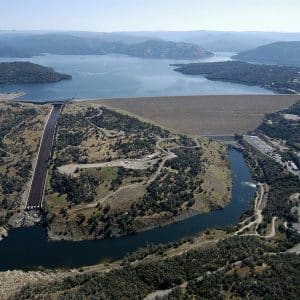
In general terms, a dam is any structure that obstructs or converts the flow of water in rivers and streams, and they frequently serve more than one purpose. Dams store water to compensate for fluctuations in river flow, and they also provide irrigation, hydropower, drinking water, flood control, and support for recreational activities. There are four main types of dams, and dams are often a combination of these different types:
Embankment
Embankment dams are typically constructed from natural earth materials such as rock and compacted soil, and are therefore far less expensive than concrete dams. Therefore, not surprisingly, more than 80% of all large dams in the United States are embankment dams. Typically used to retain water across wide rivers, embankment dams have a triangular profile and an impervious core and are termed “earthfill” or “rockfill” depending on whether they are primarily comprised of earth or rock.
Gravity
Gravity dams are constructed of concrete or stone masonry and span narrow river valleys with firm bedrock. They are designed to hold back water by simply using the weight of the dam alone to resist the horizontal water load pushing against it. Each section of the gravity dam is stable on its own, independent of any other dam section.
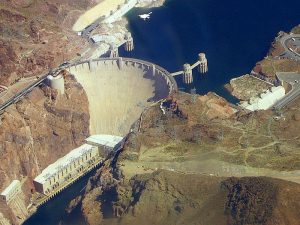
Arch
While arch dams are also constructed of concrete, they differ from gravity dams in that they are designed to transfer water loads to adjacent rock formations. Arch dams are constructed only in narrow canyons with strong rock walls that are able to resist the arch pressure at the foundation and sides of the dam. Arch dams are thin and require less material than any other type of dam.
Buttress
Buttress dams are hollow gravity dams with a solid upstream side that is supported by a series of buttresses on the downstream side. Constructed of reinforced concrete, buttress dam walls are straight or curved and are extremely heavy, pushing the dam into the ground.
Dams in the U.S.
In the United States, there are approximately 84,000 dams. The average age of these dams is 52 years old, and by 2020, over 70% of our nation’s dams will be over 50 years old, which is the widely-accepted longevity of most dams. In addition, the number of high-hazard dams, which are dams whose failure would likely cause the loss of life, is on the rise. Currently there are over 14,000 high-hazard dams nationwide, with another 13,000 being labeled significant-hazard, meaning their failure would cause significant economic loss. There are over 4,000 deficient dams, meaning they are at serious risk of failure, and 2,000 of these deficient dams are also high-hazard. The cost to repair these dangerous dams is estimated to be about $21 billion.
Many of our dams were originally constructed as low-hazard dams, which have more lenient design criteria due to their location in non-developed areas, typically agricultural. However, with the nation’s population growth and extensive development, these dams are now located in populated areas and considered high-hazard. This trend is expected to continue as population steadily increases.
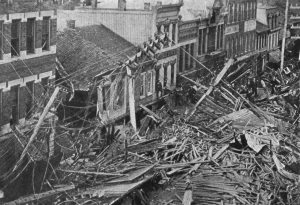
The federal government owns only 3,225 — about 4% — of our nation’s dams. The remaining dams, over two-thirds of which are privately owned, fall under the jurisdiction of state dam inspection programs, with no federal oversight or regulation. State dam safety programs provide the permitting, inspection, and recommendations, along with enforcement authority, for 80% of our nation’s dams. Only one state, Alabama, completely lacks a dam safety regulatory program, but the rest are sorely underfunded and understaffed. For example, the average number of dams per dam safety inspector is 207. It is indeed daunting that dam safety programs are largely responsible for public safety, yet lack the resources to effectively provide that safety.
What causes dam failure?
- Overtopping causes 34% of all dam failures. Inadequate spillway design, blocked spillways, settlement of the dam crest, and floods exceeding dam capacity are all causes of overtopping.
- Foundation defects such as slope instability and settlement cause about 30% of all dam failures.
- Piping, resulting in internal erosion caused by seepage, causes 20% of all U.S. dam failures.
- The remaining 16% of dam failures are the result of other causes including structural failure of materials, inadequate maintenance, settlement and cracking, and deliberate acts of sabotage.
What can we do?
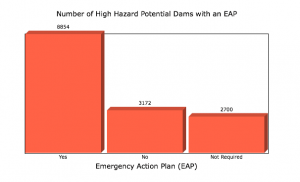
The 2010 Iowa Lake Delhi dam failure cost our economy about $170 million between damages and economic losses, and the 2006 Kaloko Reservoir Dam failure in Hawaii killed seven people. To make matters worse, the Kaloko dam was over 100 years old and had never once been inspected prior to its failure. Our dams have been given a “D” rating from the American Society of Civil Engineers (ASCE) 2013 Infrastructure Report Card, and the ASCE has recommended steps to take to improve that rating, one of which is the development of Emergency Action Plans (EAPs) for 100% of our nation’s high-hazard dams by 2017. Only 66% currently have EAPs.
Having effective EAPs at all high-hazard, and most significant-hazard, dams in the United States is the most important step in reducing the risk for loss of life and property damage from dam failures, and it is absolutely critical that deficient high-hazard dams have updated EAPs in place. To that end, Tata & Howard has been working with the Connecticut Department of Energy and Environmental Protection (CT DEEP) this spring to perform over 40 dam inspections and update over 30 EAPs.
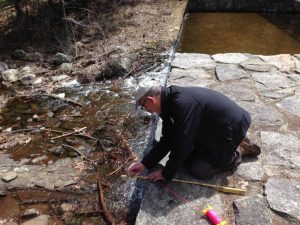
Besides maintaining EAPs for high-hazard dams, ASCE recommends the following steps to address our nation’s dam infrastructure:
- Reauthorize and fully fund the National Dam Safety Program (NDSP), which is a partnership of the states, federal agencies, and other stakeholders that encourages individual and community responsibility for dam safety.
- Establish a national dam rehabilitation and repair funding program to cost share repairs to publicly owned, nonfederal, high-hazard dams.
- Implement a national public awareness campaign to educate individuals on the location and condition of dams in their area.
- Encourage incentives to governors and state legislatures to provide sufficient resources and regulatory authorities to their dam safety programs.
- Require federal agencies that own, operate, or regulate dams to meet the standards of Federal Guidelines for Dam Safety.
In addition to local and federal oversight and regulation, there are a number of steps that the public can take to minimize the risks associated with dam failure:
- Know your risk. Find out if you live in a dam breach inundation zone by contacting your local emergency management agency or by contacting your state dam safety program (www.damsafety.org).
- Know your role. Know the dams in your area where you live and work, and be aware of potential maintenance issues and report them to authorities immediately. Dam owners have the responsibility to maintain their dams and to have an EAP, especially for high-hazard dams, and should work with the federal or state regulator to comply with safety standards.
- Take action. Inform your friends and neighbors about the benefits and risks associated with dams and have an evacuation route in place for your family and/or business should a dam fail. If you live below a dam, it is imperative that you maintain flood insurance.
In conclusion
Dams are an integral part of our infrastructure, providing many important benefits. A large percentage of our nation’s dams are in need of repair and updating, and our high-hazard dams are of particular concern. It is critical that all of us, including the federal government, states, communities, engineers, and private dam owners, work together to promote dam safety and education. Our future depends on it.
For more information on dam safety, please visit https://www.fema.gov/dam-safety#
